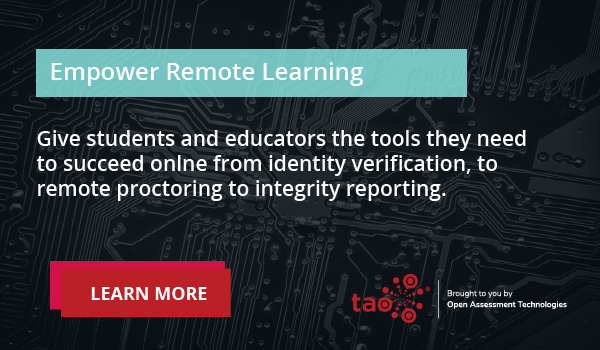As COVID-19 continues, many colleges and universities are returning to distance learning. It’s no wonder: students are contracting the virus at alarming rates as the institutions’ safety systems continue to get overwhelmed. To support higher education organizations in transitioning to an effective digital learning environment, we’ve put together strategies that highlight the priorities that education leaders must consider when implementing this new mode of instruction.
Establish Clear Communications
Online courses are new to many students. No matter how hard we try, they’ll never truly replicate a true in-classroom experience — for better or for worse. That’s why, as many courses move online, it’s critical for instructors to communicate what they expect from students in a distance learning environment. It’s important to be honest here:
- How will the course go from a scheduling perspective? Will the class meet in real time?
- What’s the expectation for attendance, examinations or turning in assignments?
- Is there leeway for technical issues, missed lectures or late assignments?
No matter how strict the approach to a specific course, instructors must keep in mind that addressing these pragmatic elements alone will greatly contribute to the students’ sense of comfort during the change.
Invest in the Right EdTech Solutions
It goes without saying — an effective digital learning environment is only as good as the technology at its foundation. It’s not just about the promising features but also the overall experience of students and instructors. The goal is to create as little friction as possible during the transition of in-class instruction to digital distance learning. Without the right stack of EdTech solutions, connecting students and the institution into a virtual campus is extremely difficult.
Find the Right Proctoring Integration
Remote proctoring tools address many issues of digital assessment. To ensure a seamless testing experience, while mitigating challenges such as cheating or a lack of usability of the assessment, institutions should ensure their proctoring tools include:
- Security features, such as preventing free-reign internet access, restricting mobile device use, blocking screen capture and sharing capabilities
- Technical support to ensure that different students’ hardware runs the digital assessment without delay
- Monitoring features, such as analytics tools to determine trends and advanced artificial intelligence to support or replace an in-person proctor
The right remote proctoring solution, which seamlessly integrates into the existing learning platform, ensures that any given assessment is being administered in a consistent, fair and easily trackable manner.
Prioritize Students that Need Accommodations
Accessibility has never been as important as it is now: students that typically require accommodations may be struggling more than others in the fully or hybrid digital environment. The truth of the matter is, for many institutions establishing a digital learning foundation, accessibility comes as a second thought. To avoid falling into the same trap, ensure that your digital learning environment involves the following accessible features:
- A consistent assessment interface across the entire experience
- Flexible options for navigation, access and readability
- Logical sections for hierarchy of visual content and text
- Clearly visible and contrasting text and color use
- Descriptive text with test items and visual elements
Control and full customization ability within the EdTech solution are key to a personalized and accessible testing experience for all students, no matter their level of experience.
Maintain Adaptability at All Times
As the world changes around us, so will the needs of students. It’s difficult to predict the new challenges that will come in the future — that’s why it’s best to adopt an adaptable approach from the beginning. When you establish an interoperable EdTech ecosystem in your college or university, it means that you’d be prepared for any last-minute changes: whether it’s going fully remote, students needing extra support or integrating new tools for the new “new normal.”
—
Remote education in higher education may pose significant challenges to the institution, the instructors and their students. However, the right technology can support a strategic approach to overcoming these challenges. With platforms like TAO Testing, based on IMS’s open interoperability standards, college and university students can comfortably return to learning and testing without being held back by the current uncertain times.

